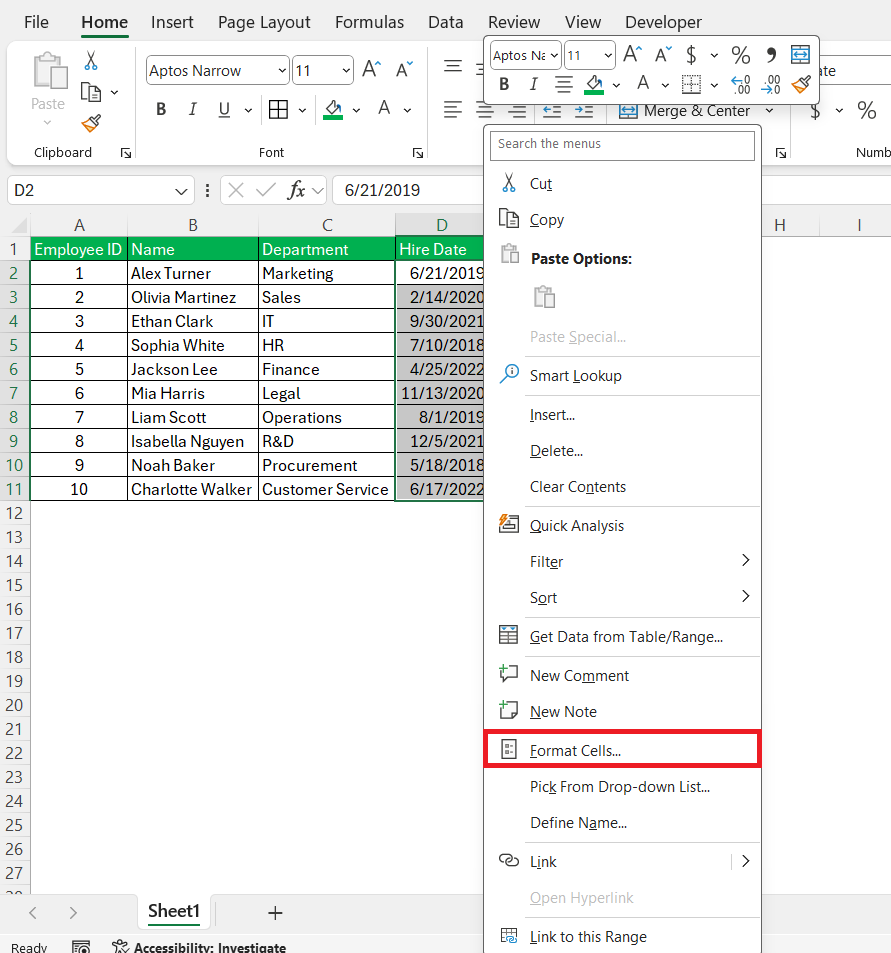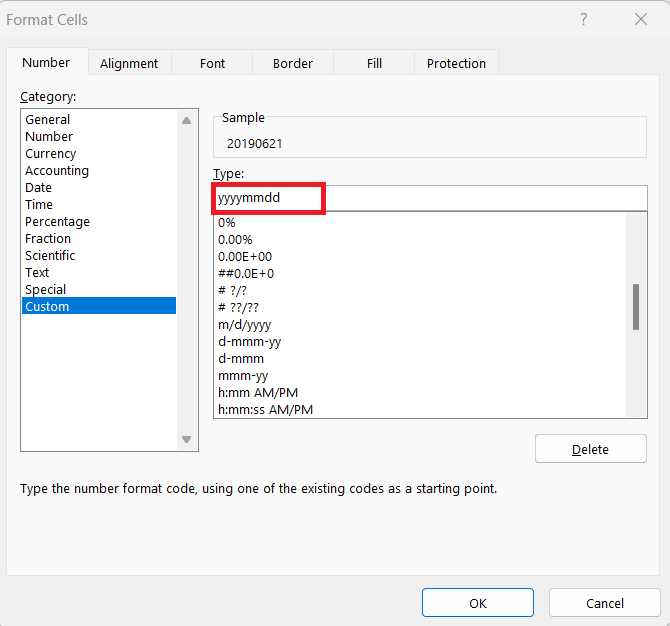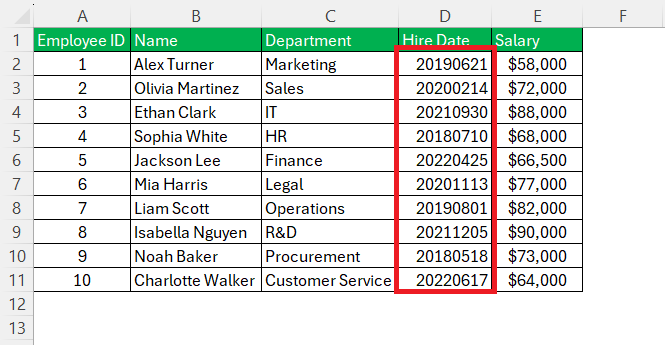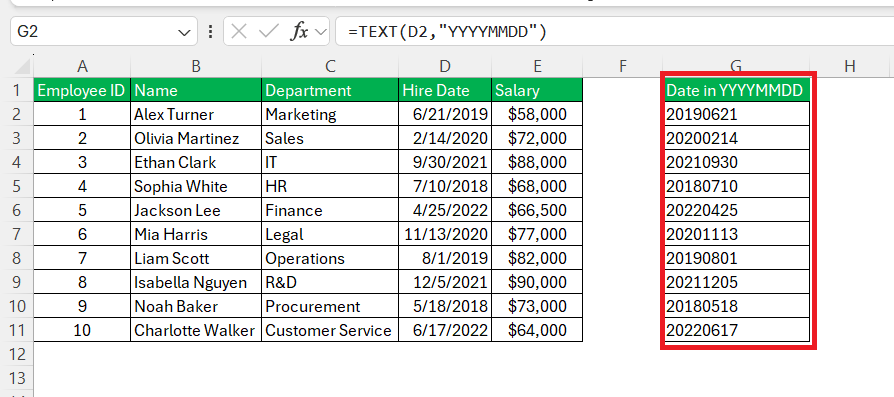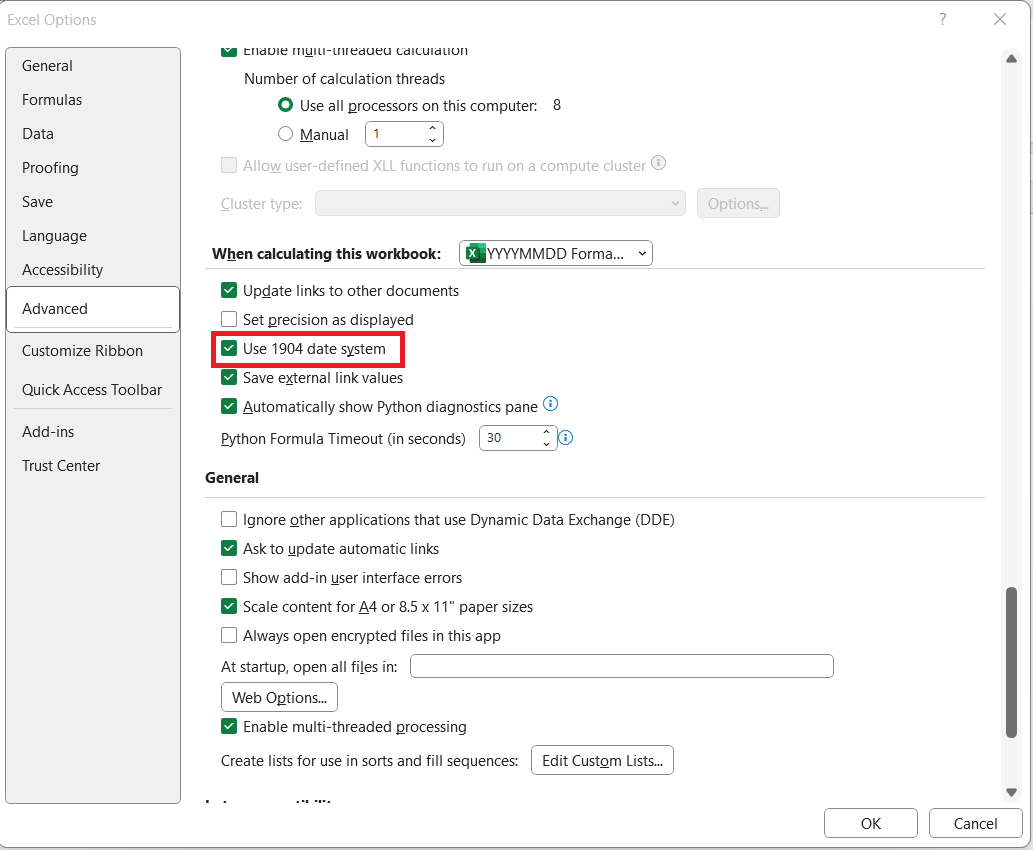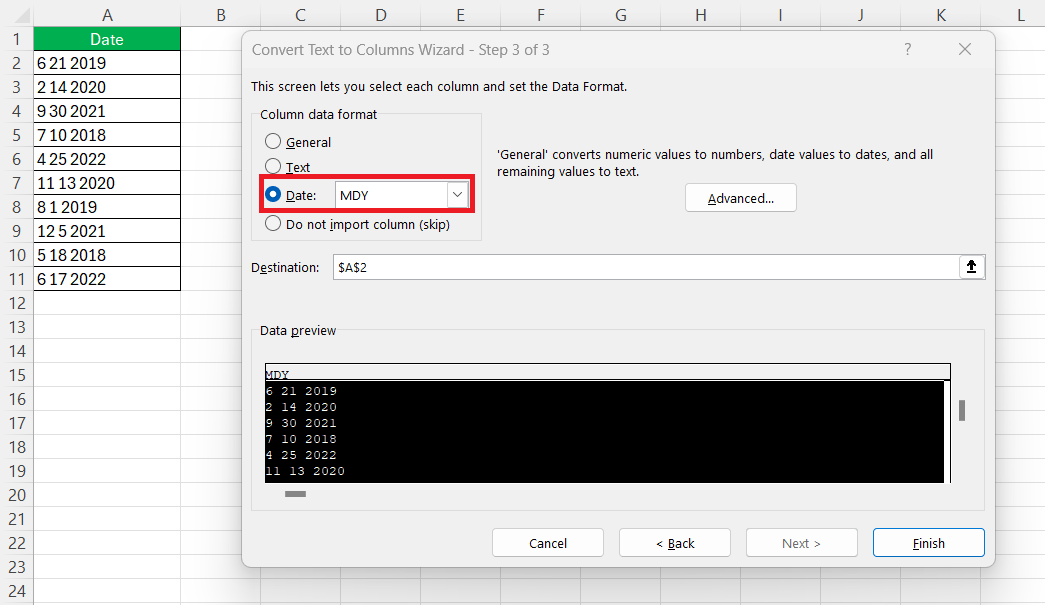When working with dates in Excel, I often find myself needing a format that’s both efficient and easy to sort. The YYYYMMDD format is perfect for this because it eliminates any ambiguity, especially when dealing with international data. It’s a straightforward way to ensure that dates are consistently organized, making my spreadsheets more reliable and easier to work with. In this article, I’ll show you how to apply and use the YYYYMMDD format in Excel.
Key Takeaways:
- The YYYYMMDD format is ideal for clear and consistent date organization in Excel.
- It eliminates confusion, especially in international data handling.
- Sorting dates is more straightforward with the YYYYMMDD format.
- Custom formatting in Excel allows for flexible date presentation.
- The TEXT function can convert dates to YYYYMMDD format easily.
Table of Contents
Unveiling Excel Secrets: YYYYMMDD Unraveled
YYYYMMDD Format in Excel
When working with dates in Excel, you might have specific formatting needs depending on the project or data analysis you’re doing. One format that’s particularly useful for sorting and organizing data is the YYYYMMDD format.
This format displays the year first, followed by the month and day without any separators, which makes it easy to sort dates chronologically.
Why Use the YYYYMMDD Format?
The YYYYMMDD format is not only concise but also universally recognized, especially in data management and computing environments. It avoids any confusion caused by different date formats (like MM/DD/YYYY or DD/MM/YYYY) and ensures that dates are sorted correctly when they’re treated as text strings.
Step-by-Step: Transforming Dates in Excel
Converting “yyyymmdd” to a Standard Date Display
Converting ‘yyyymmdd’ to a more familiar date format in Excel is something I’ve done countless times. For instance, I’d select the cells with the ‘yyyymmdd’ format, right-click to bring up the context menu, and choose ‘Format Cells’.
Under the Number tab, selecting Custom from the list and inputting the desired format like ‘yyyymmdd’ transforms the date display.
This flexibility lets me tailor dates to the preferred style for my projects or reports.
Converting Dates to YYYYMMDD with a Formula
Sometimes, you might want to convert a date to this format using a formula, especially if you need to generate a string or work with the date in a more complex formula. Here’s how to do that: Use the TEXT function:
=TEXT(D2, “yyyymmdd”)
This formula will convert the date in cell A1 to a text string in the YYYYMMDD format.
Tips and Tricks for Smoother Date Handling
Avoiding Common Pitfalls in Date Formatting
Avoiding common pitfalls in date formatting is crucial to prevent data discrepancies. I always ensure that Excel is set to recognize dates in the correct regional format. By going to File > Options > Advanced and scrolling down to the section titled ‘When calculating this workbook’. Check ‘Use 1904 date system’.
It’s essential to remember that Excel stores date as serial numbers; thus, it’s important to confirm that date entries are recognized as dates and not plain text, as this impacts calculations and sorting.
When Excel Doesn’t Recognize Your Date Format
When Excel doesn’t recognize your date format, it can be perplexing. I’ve learned that it’s often because the dates are entered as text or the system’s regional settings don’t match the date format used. First, I check for leading spaces or non-date characters.
If that’s not the issue, I try using the ‘Text to Columns’ wizard, choosing ‘Delimited’, and then ‘Date’ with the correct format. This often coaxes Excel into recognizing the dates correctly.
Real Excel Stories: YYYYMMDD Successes
Case Studies: How YYYYMMDD Streamlined Workflows
I’ve observed numerous cases where adopting the YYYYMMDD format has significantly streamlined workflows. In one case study, a multinational corporation switched to this format and saw an immediate reduction in scheduling errors across its global teams, leading to a smoother project management process.
Another case involved a financial institution that managed to cut down on operational errors in transaction processing after standardizing the date format, which enhanced compliance and reporting efficiency.
From Frustration to Freedom: Reader Triumphs
Through my work, I’ve encountered firsthand accounts where mastering the YYYYMMDD format in Excel led readers from frustration to freedom. One reader, overwhelmed by disorganized data, used YYYYMMDD to automate their reporting system, drastically reducing the time spent on monthly reports.
Another shared how this knowledge freed them from the tiresome manual entry, leading to a more reliable dataset and the confidence to take on more complex tasks with ease.
FAQ: Everything You Need to Know About Excel Dates
How to do yyyymmdd in Excel?
To do ‘yyyymmdd’ in Excel, I select the cell or range where I need this format, right-click, and choose ‘Format Cells’. Under the Number tab, I select Custom and type ‘yyyymmdd’ into the Type box. After clicking OK, the selected dates convert to this compact, unambiguous format.
How Do I Ensure Consistent Date Formats Across My Worksheets?
To ensure consistent date formats across my worksheets in Excel, I start by setting a standard format like ‘YYYY-MM-DD’ for all date columns. I meticulously use this format when entering new data and converting existing dates. To maintain uniformity, I often utilize Excel templates with predefined formats and share detailed formatting guides with collaborators. This keeps everyone aligned and streamlines collaborative projects.
Can I Automate Date Conversions in Large Excel Datasets?
Yes, I can automate date conversions in large Excel datasets. By employing formulas like TEXT and DATEVALUE or using the ‘Text to Columns’ wizard, I can quickly convert entire columns to the desired date format. For repetitive tasks, I create macros with Visual Basic for Applications (VBA) to handle the date formatting with a single button click, enhancing the efficiency of the process significantly.
How to change the date format in Excel from dd mm yyyy to mm dd yyyy?
To change the date format in Excel from ‘dd mm yyyy’ to ‘mm dd yyyy’, I select the cells with the dates, and then use ‘Ctrl + 1’ to bring up the Format Cells dialog. Under the Number tab, I choose Custom and then adjust the format by typing ‘mm dd yyyy’ in the Type box. This simple change makes the dates fit my preferred American-style format.
How do you convert date TEXT to date format in Excel?
To convert date text to a date format in Excel, I use the DATEVALUE function. For example, if the text date is in cell A1, I’ll enter =DATEVALUE(A1) in cell B1. Excel then interprets the text as a serial date number, which I can format using the Format Cells dialog to display as a standard date.
John Michaloudis is a former accountant and finance analyst at General Electric, a Microsoft MVP since 2020, an Amazon #1 bestselling author of 4 Microsoft Excel books and teacher of Microsoft Excel & Office over at his flagship MyExcelOnline Academy Online Course.

